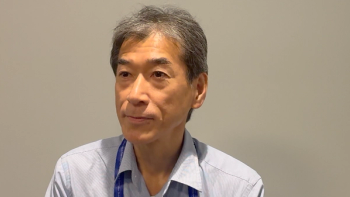
- Oncology Vol 28 No 4_Suppl_1
- Volume 28
- Issue 4_Suppl_1
(S016) Head and Neck Second Primary Cancer Rates in the HPV Era: A SEER Analysis
Our objective was to analyze the incidence of second primary cancer limited to the head and neck in a population with primary squamous cell carcinoma of the head and neck and its temporal trends in the human papillomavirus (HPV) era.
Dayssy A. Diaz, MD, Isildinha Reis, PhD, Donald Weed, MD, Nagy Elsayyad, MD, Michael Samuels, MD, Matthew Abramowitz; Jackson Memorial Hospital, University of Miami
Purpose: Head and neck (HN) cancer patients are at high risk of second primary cancer (SPC) of the HN or other aerodigestive system sites. HPV-driven tumors are associated with high grade and oropharyngeal (OPC) location. Our objective was to analyze the incidence of SPC limited to the HN (HNSPC) in a population with primary squamous cell carcinoma (SCC) of the HN and its temporal trends in the human papillomavirus (HPV) era.
Methods: The Surveillance, Epidemiology, and End Results (SEER) database was queried for patients with histopathologically confirmed primary SCC of the HN (excluding skin, salivary glands, nasopharynx, and thyroid) between 1973 and 2008. To assess temporal trends, we defined three time periods: 1973–1989, 1990–1999, and 2000–2008. HNSPCs that occurred within 2 years of initial diagnosis were excluded, since most of the HN recurrences occur within 2 years of diagnosis. Incidence rates of HNSPC, defined as number of HNSPCs per 10,000 person-years (PY10K) of follow-up, were calculated in each time period. The analysis was conducted according to site and grade of the original cancer. Cumulative incidence rates of HNSPC were estimated and compared based on competing risk analysis, with death as the competing risk.
Results: A total of 105,385 cases met our inclusion criteria. The mean age at diagnosis was 61.9 years. Of all patients, 14.7% had OPC, 44.5% had oral cavity cancer (OC), and 40.8% had cancer of the larynx/hypopharynx (LH); 18.9% had low-grade tumor, 37.3% had intermediate-grade tumor, 18.9% had high-grade tumor, and tumor grade was unknown in 24.9%. The incidence of OPC increased over time, constituting 9.5% of the cases in the period 1973–1989 and reaching 18.6% in the period 2000–2008. A total of 5,786 patients had high-grade OPC in the entire cohort.
A total of 4,659 cases of HNSPC were identified, of which 13.5%, 58.3%, 23.3%, and 5% were OPC, OC, LH, and other HN sites, respectively. The estimated incidence rates/PY10K of HNSPC for patients with primary OPC decreased over time: 105.8 (1973–1989), 80.5 (1990–1999), and 50.4 (2000–2008). In contrast, HNSPC in OC patients increased with time: 59.1 (1973–1989), 82 (1973–1989), and 71.8 (2000–2008), respectively. The incidence rates of HNSPC were stable for LH: 33.7 (1973–1989), 39.7 (1990–1999), and 36.0 (2000–2008). High-grade primary HN cases of the OPC showed a decrease of 54% in the person-year incidence rate/PY10K of HNSPC from the first to the last period (65.1 for 1973–1989, 55.3 for 1990–1999, and 30.2 for 2000–2008). The drop was less for the high-grade OC patients (67.1, 60.3, and 41, respectively) and stable for the high-grade LH cancer (33.0, 39.8, and 36.5, respectively). A competing-risk analysis in the high-grade group showed a larger period effect with decreased cumulative incidence rate of HNSPC for OPC in the period 2000–2008.
Conclusions: The incidence of HNSPC in patients with primary HN cancer has decreased over time. This reduction is driven by lower rates in patients with high-grade OPC. This finding is temporally related with the increase in HPV-associated OPC over this time period. These results suggest that the incidence rate of HNSPC may be lower for HPV-associated HN cancers compared with historic estimates of HNSPC in non–HPV-related cancers and calls for further study of this issue.
Proceedings of the 96th Annual Meeting of the American Radium Society -
Articles in this issue
Newsletter
Stay up to date on recent advances in the multidisciplinary approach to cancer.
















































































